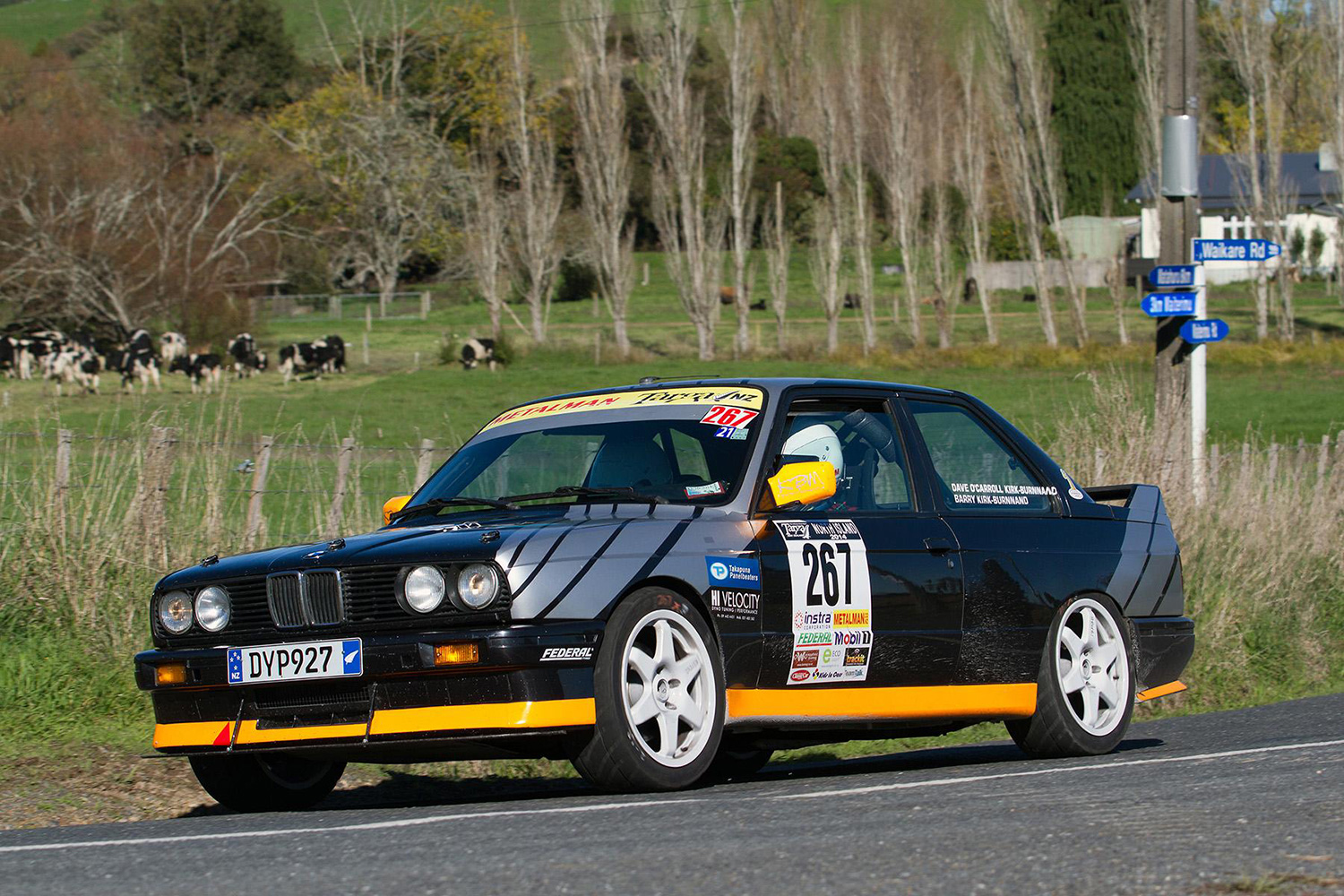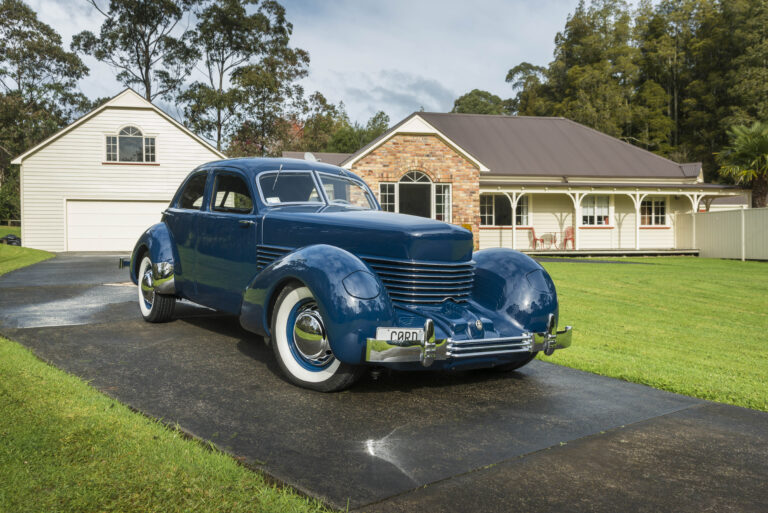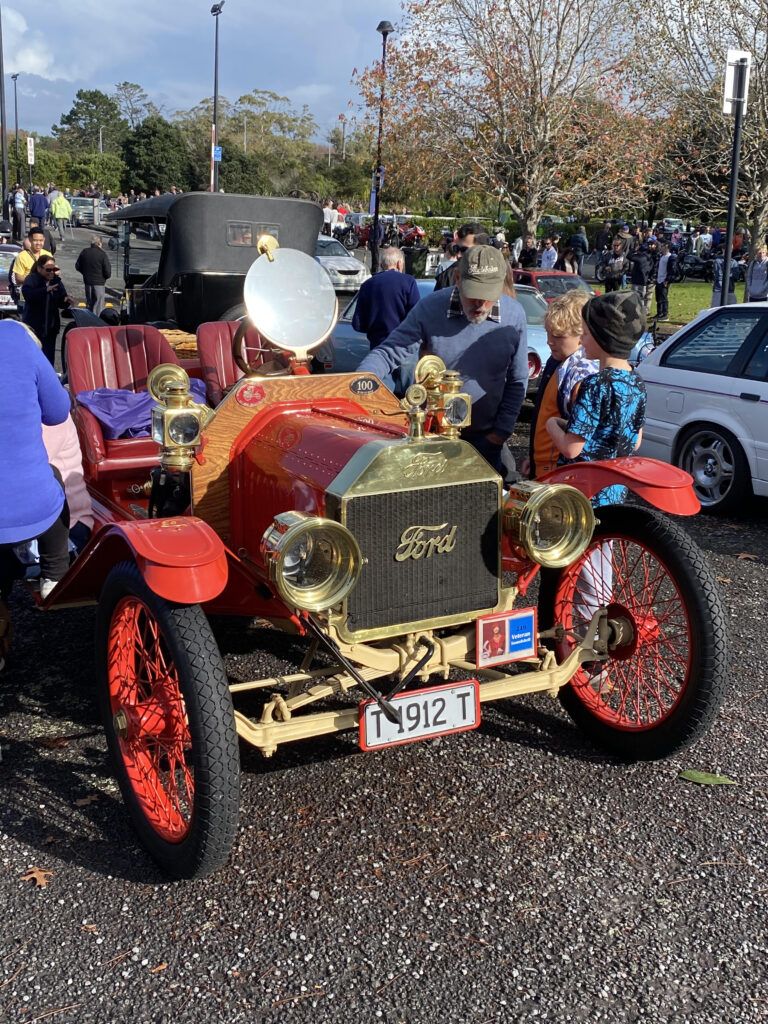Words by Ross MacKay
Targa tarmac rally ‘King’ Tony Quinn and co-driver Naomi Tillett face a tough battle next week as the five-time winner attempts to wrest back his ‘crown’ from defending title-holder Martin Dippie and his co-driver Jona Grant.

Quinn, with original co-driver Keith Wenn, won his first Targa New Zealand event back in 2003 driving a four-wheel-drive Porsche 996 Turbo, then — with Tillett alongside — won four in a row from 2009 to 2012 behind the wheel of a four-wheel-drive Nissan GT-R35
Last year the 57-year-old Scottish-born businessman who now divides his time between Australia’s Gold Coast and New Zealand’s Central Otago (where he owns the Highlands Motorsport Park near Cromwell), was all set to try and make it five in a row in the GT-R before retiring the car, but pulled out of the 19th annual event at the last minute because of the pending opening of the new Cromwell circuit.
In his and Tillett’s absence, the 2013 event in the North Island became a battle of the turbocharged four-wheel-drive four-cylinder Mitsubishi Evos of Glenn Inkster and Spencer Winn, and Jason Gill and Mark Robinson, and the Subaru WRX Impreza of Leigh Hopper and Simon Kirkpatrick.
Dunedin Porsche GT3 pair Dippie and Grant were always the best of the two-wheel-drive runners but it was only on the last day, when the Gill/Robinson Mitsubishi suffered a blown engine, that they took the lead and went on to win the event.
All are back for the 20th anniversary Targa South Island event, and event director Peter Martin says that right now it is “anyone’s event”.
“Traditionally the overall winner has come from the Instra Allcomers 4WD ranks, but as Martin and Jona proved last year a well-driven two-wheel-drive car can still come through.”

Definite dark horse, in this case, is long-time event competitor and supporter Clark Proctor and co-driver Sue O’Neill. For the 20th anniversary event, high-profile Auckland businessman/racer Proctor has leased his hi-tech four-wheel-drive Nissan GT-R35 to Aucklander Peter Baker and co-driver James Thorne, and reverted to the two-wheel-drive Nissan V6 turbo-engined Ford Escort he originally ran in the event.
The car was a pace-setter the last time Proctor ran it and he believes, in its latest evolutionary state, it can be again.
It is also too close to call in the Metalman Classic 2WD ranks despite defending class title-holder — and one of only two drivers to start all 19 previous Targa events — Barry Kirk-Burnnand, and his co-driver Dave O’Carroll, carrying favourite status in their BMW M3.

As well as competition from Barry’s Wellington-based brother Chris and nephew Mark Kirk-Burnnand in their similar BMW M3, and Barry’s Auckland-based son Carl and his co-driver Scott Hay in their BMW 325i, last year’s class runner-up Bevan Claridge from Foxton is back with new co-driver Campbell Tannock in his Holden Commodore V8, and returning after missing last year’s event are experienced Auckland pair Neil Tolich and Cully Paterson in Tolich’s V8-engined Ford Capri Perana.
Dippie and Grant remain the top South Island prospects in their ‘home event’ but there will also be interest in the performance of veteran Christchurch driver Trevor Crowe and co-driver Andy Oakley in Crowe’s mid-engined Subaru Justy, as there will in the progress of fellow Cantabrians Gary Cliff and James Cowles in a Mitsubishi Evo 5, and Deane Buist and Andrew Bulman in Buist’s BDA-engined Ford Escort.
The 20th anniversary Targa South Island event starts at Christchurch’s Addington Raceway on Monday, October 27 before a prologue stage in the Port Hills and afternoon at Mike Pero Motorsport Park.
On Tuesday the field heads south for stages in mid-Canterbury, before the first of two days based in Dunedin where the cars will be housed overnight in the Forsyth Barr stadium.
After a day full of stages in the North Otago hinterland (and lunch and service stop in Oamaru’s historical precinct) on Wednesday, the field returns to Dunedin before heading south on Thursday to Invercargill — and a day’s end stage at Teretonga Park.
Friday, October 31 is then spent completing stages through Eastern Southland, West, and Central Otago before finishing at Cromwell’s Highlands Motorsport Park.
Competitors then spend the final day (Saturday, November 1) in the Lakes County with stages to and from Glenorchy, and across the Crown Range before the official finish in downtown Queenstown, with the prize-giving function the next day.
All told, just on 200 entrants will contest 807kms over 34 closed special stages linked by 1828km of open road transport stages.

TARGA HISTORY
Dubbed ‘The Ultimate Road Race’, the annual New Zealand Targa event can trace its links back to the classic open-road races — the Targa Floria and the Mille Miglia — popular in Italy from the early years of the 20th century until the 1970s.
‘Targa’ is Italian for ‘plate’, a reference either to a car’s licence plate or to the rectangular bronze plate awarded to the winner of the Targa Floria.
The first Targa New Zealand event was held in 1995, its organizer, Mike John, having been inspired by the success of Australia’s first Targa event, Targa Tasmania, in 1992.
Since then the annual multi-day New Zealand event has been joined by several other shorter, regional events with current owner and event director Peter Martin taking the helm in 2008.
Key to the ongoing success of the main and subsidiary events is the unique New Zealand landscape with its unsurpassed network of sinuous sealed roads perfect for closed Targa stages.
Targa New Zealand events are organized with the support of sponsors Ecolight, Federal motorsport tyres, Global Security, Highlands Motorsport Park, Instra Corporation, Kids In Cars, Metalman, New Zealand Classic Car magazine, Race Brakes, Team Talk, TrackIt, VTNZ, and Woolrest Biomag.


